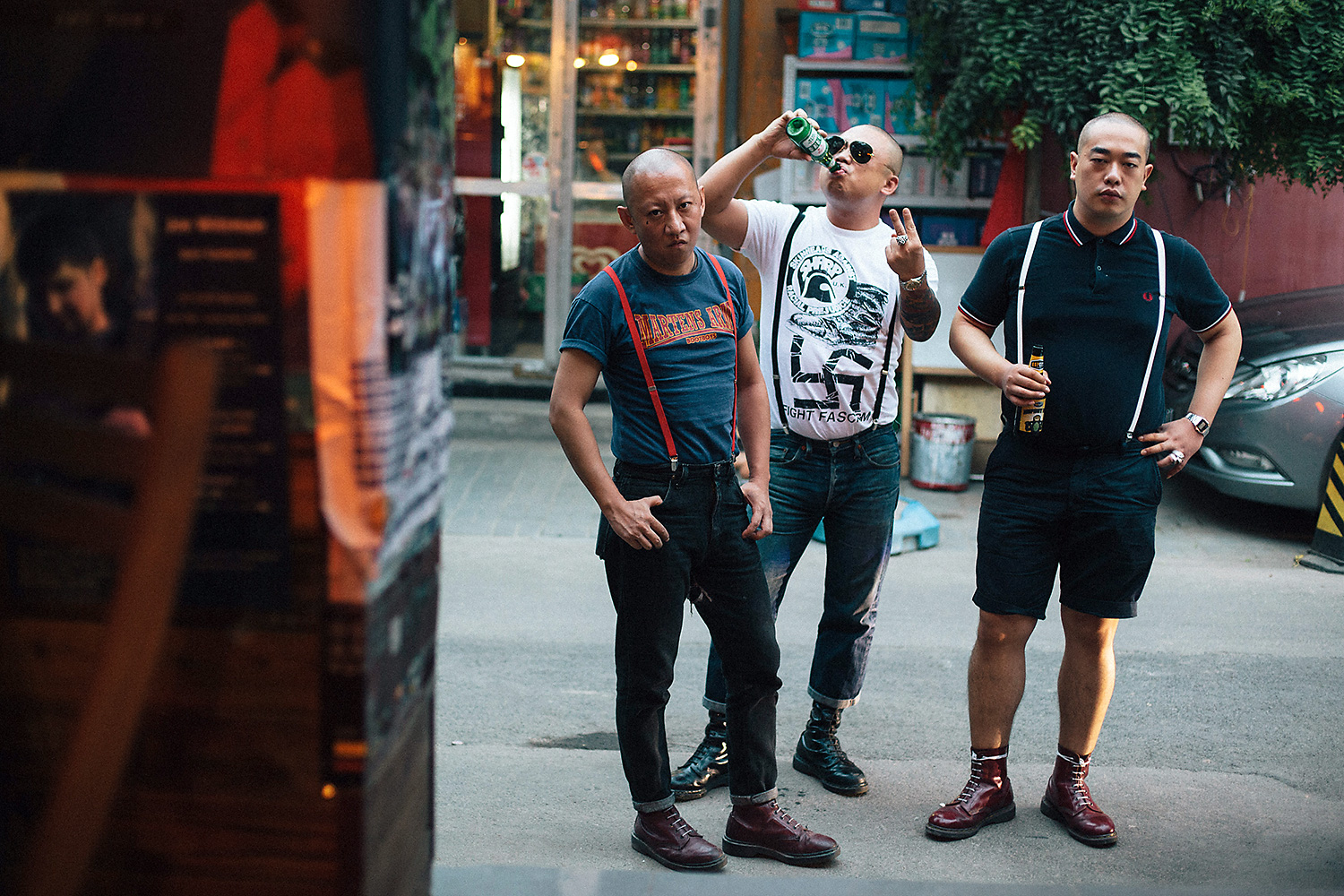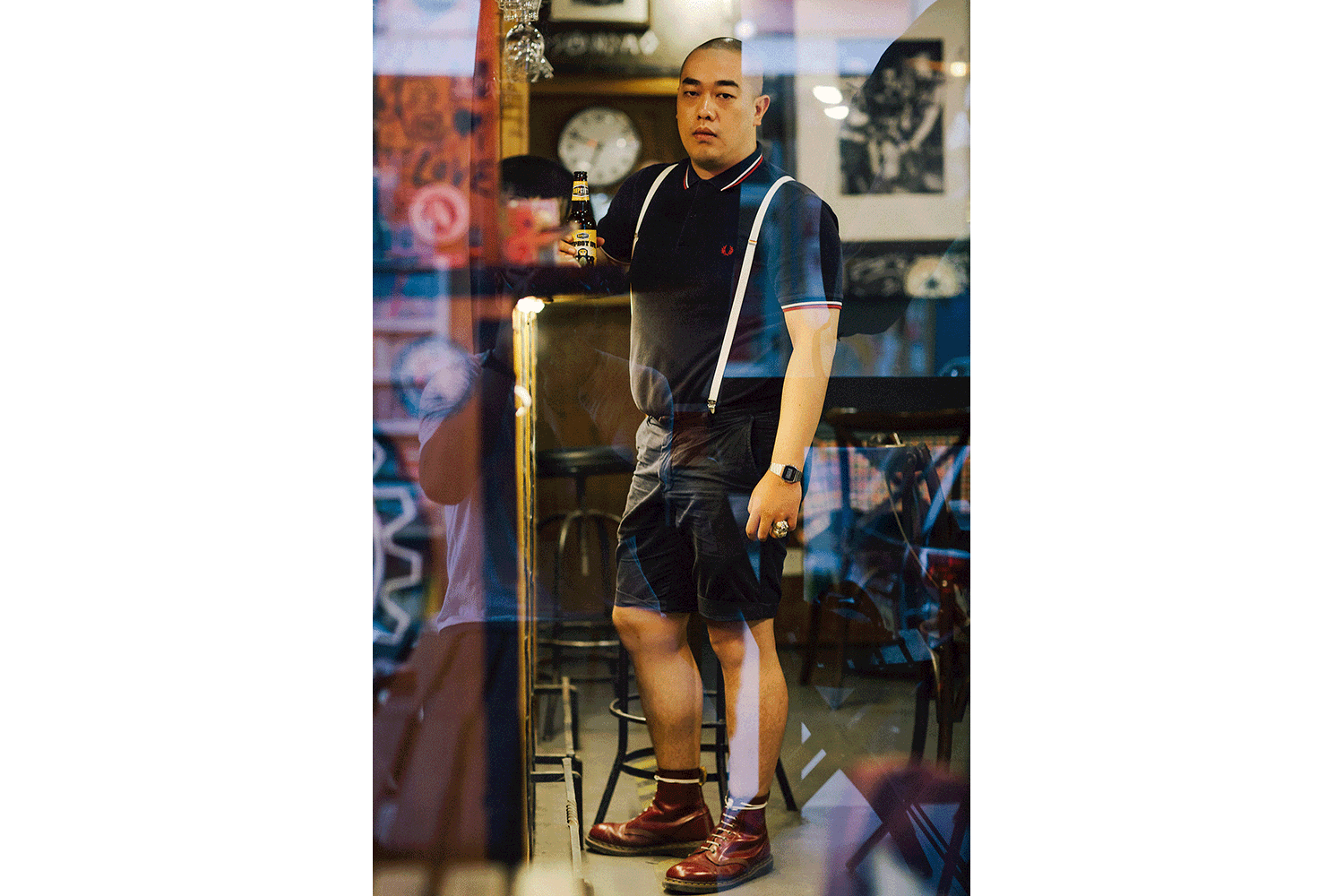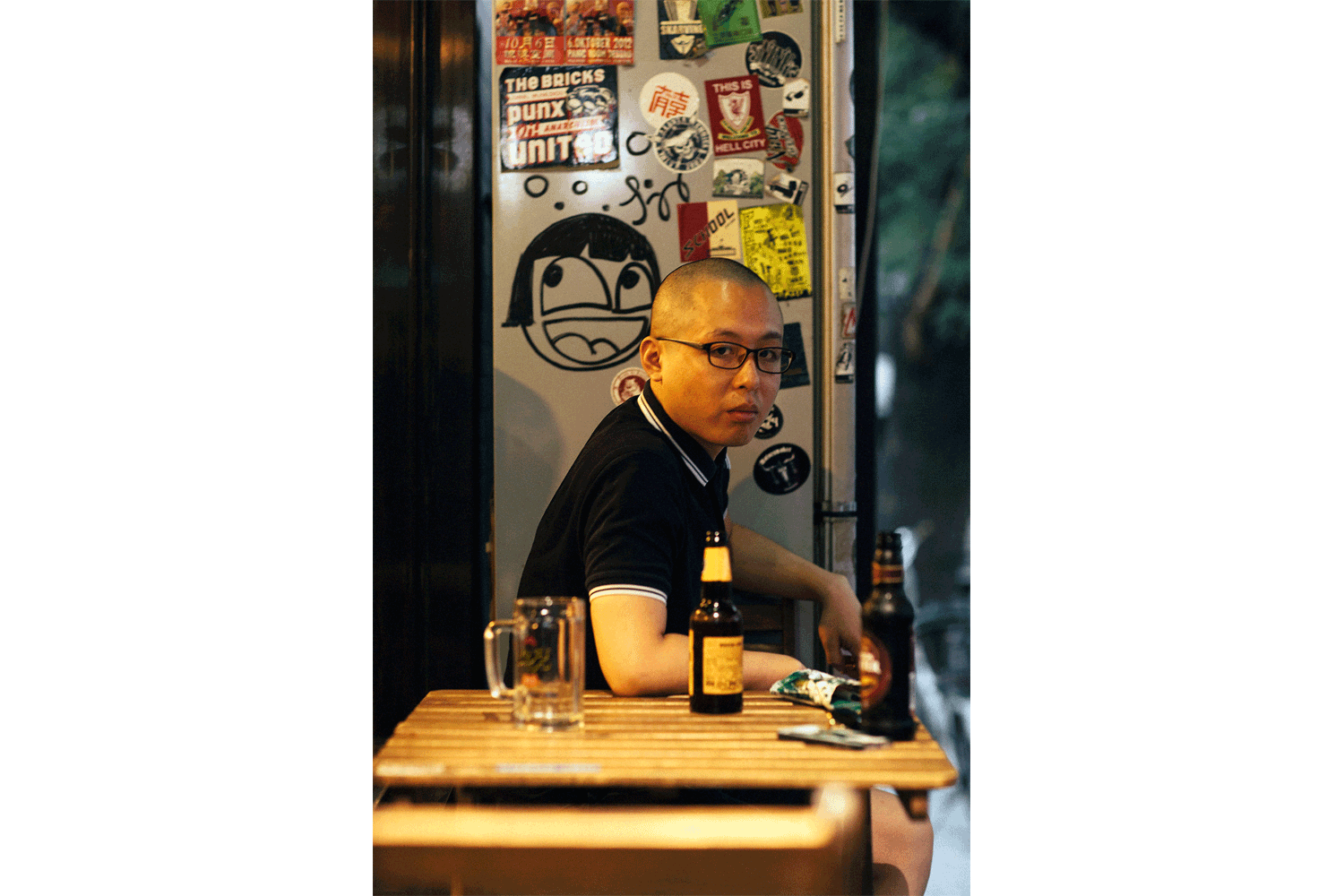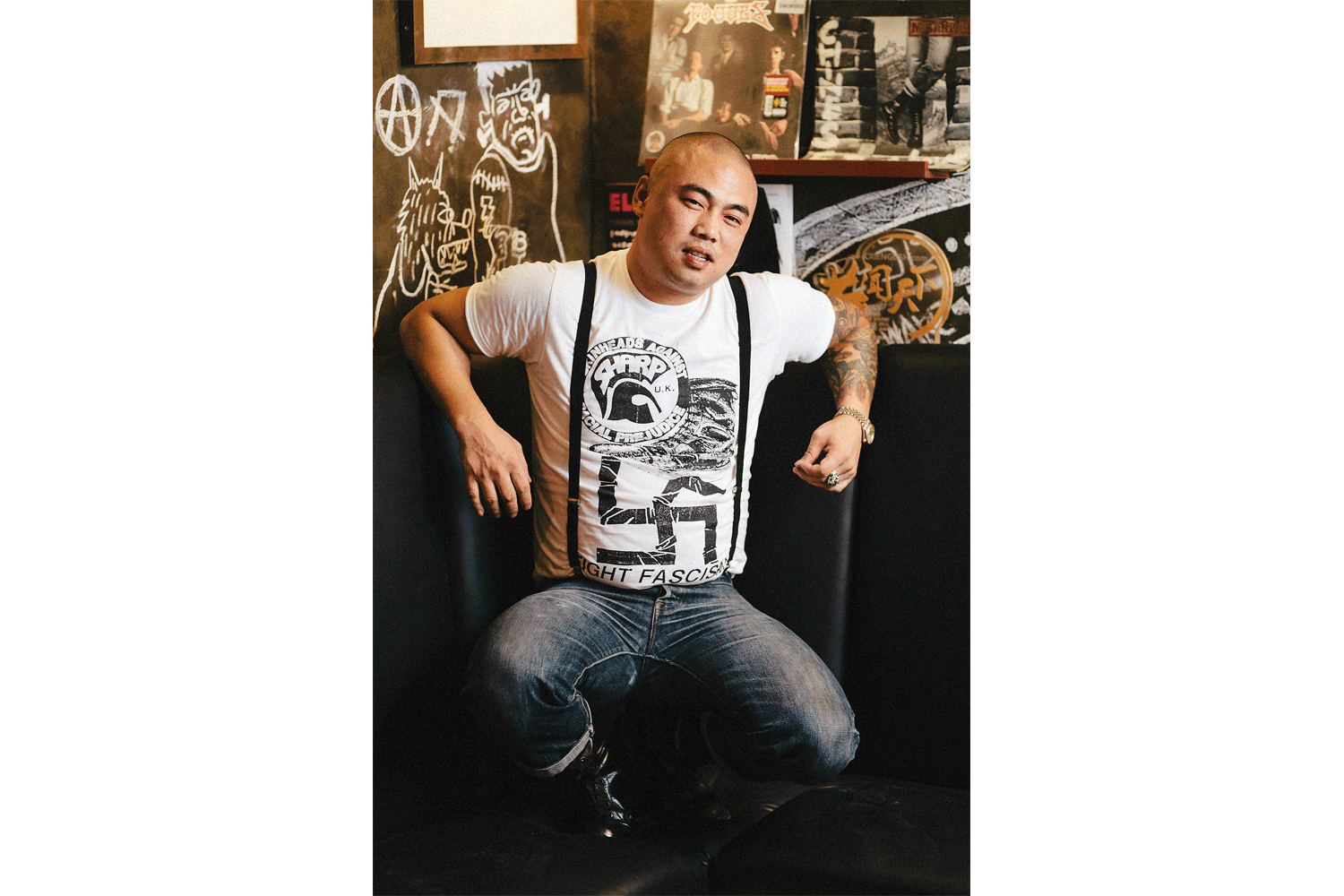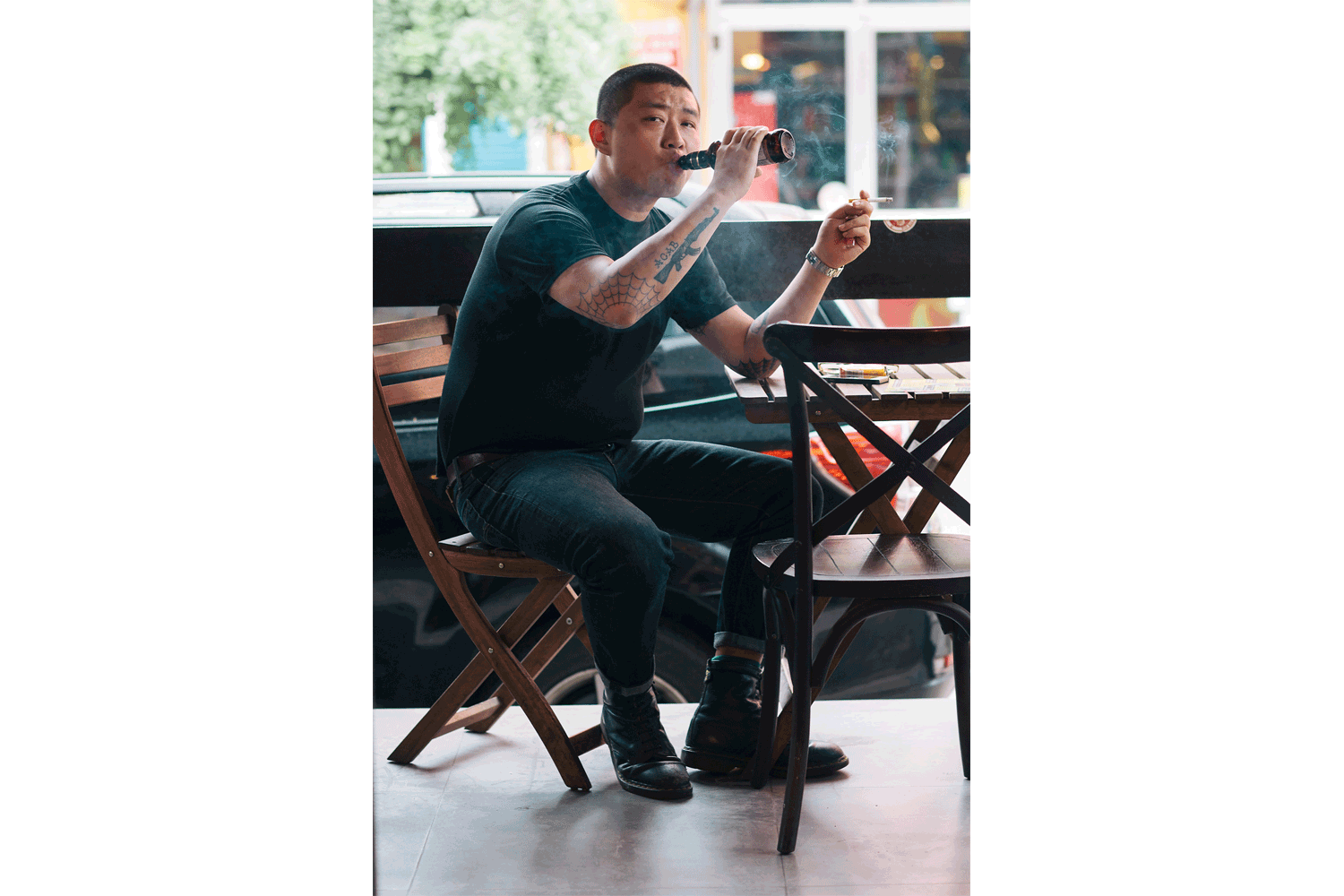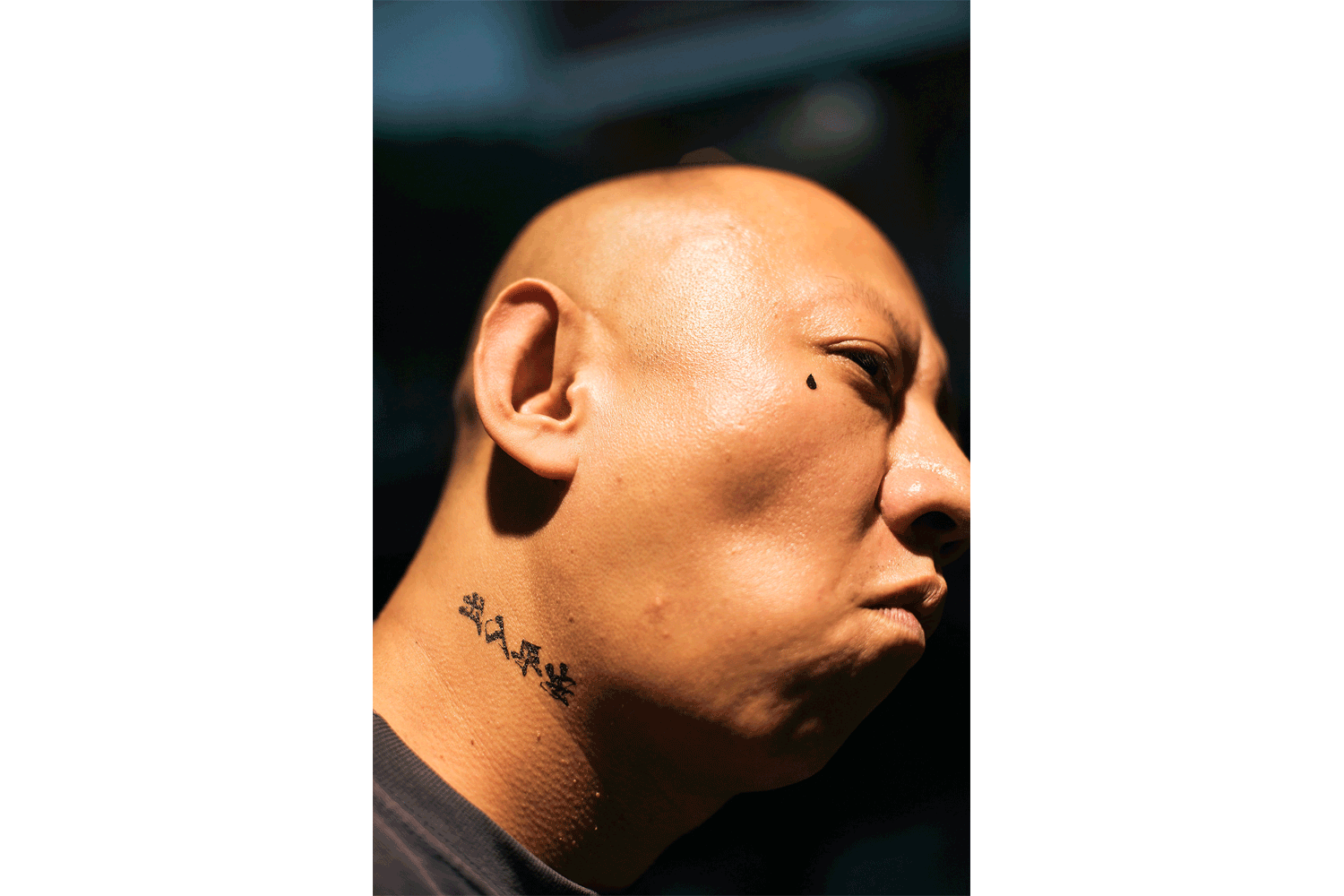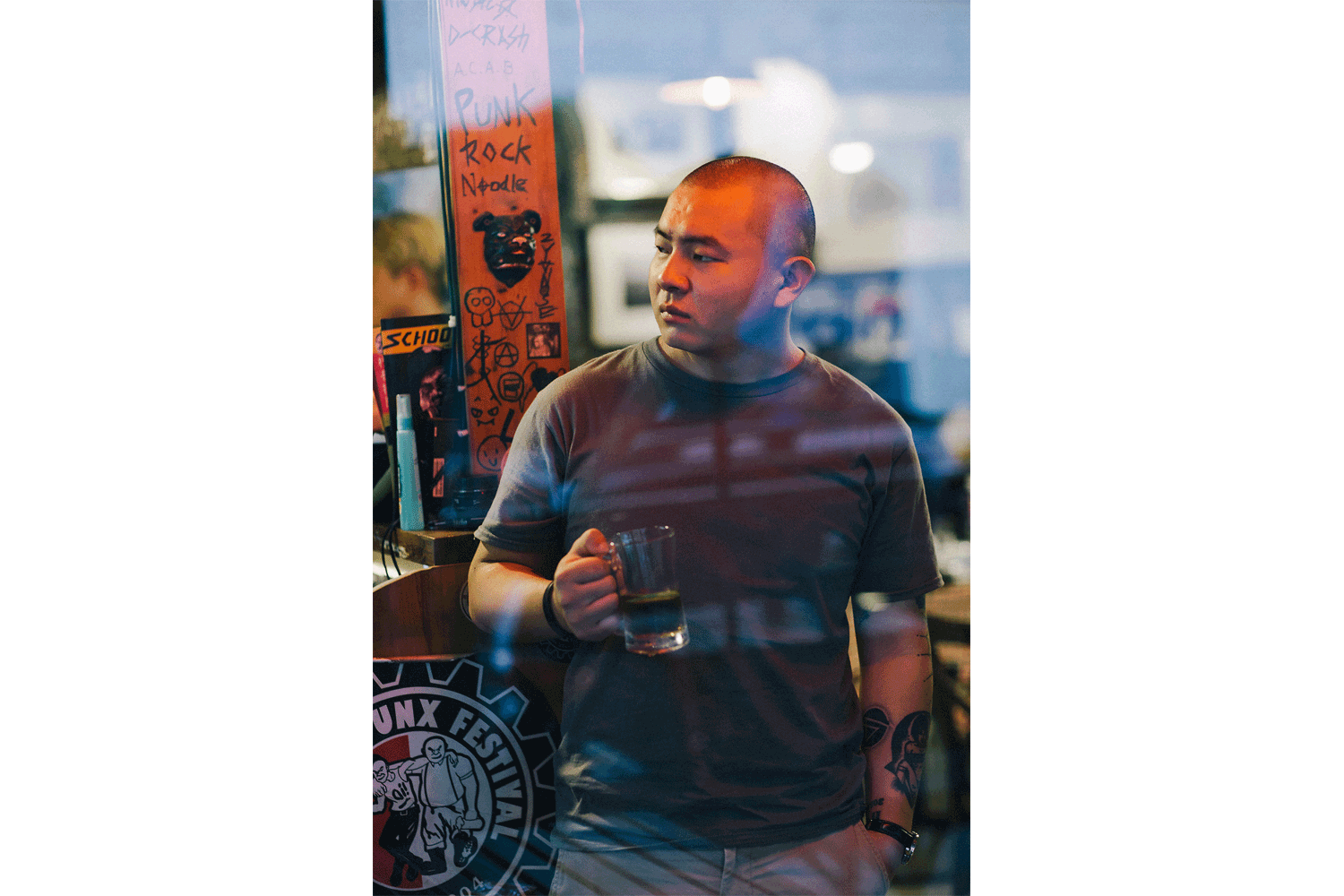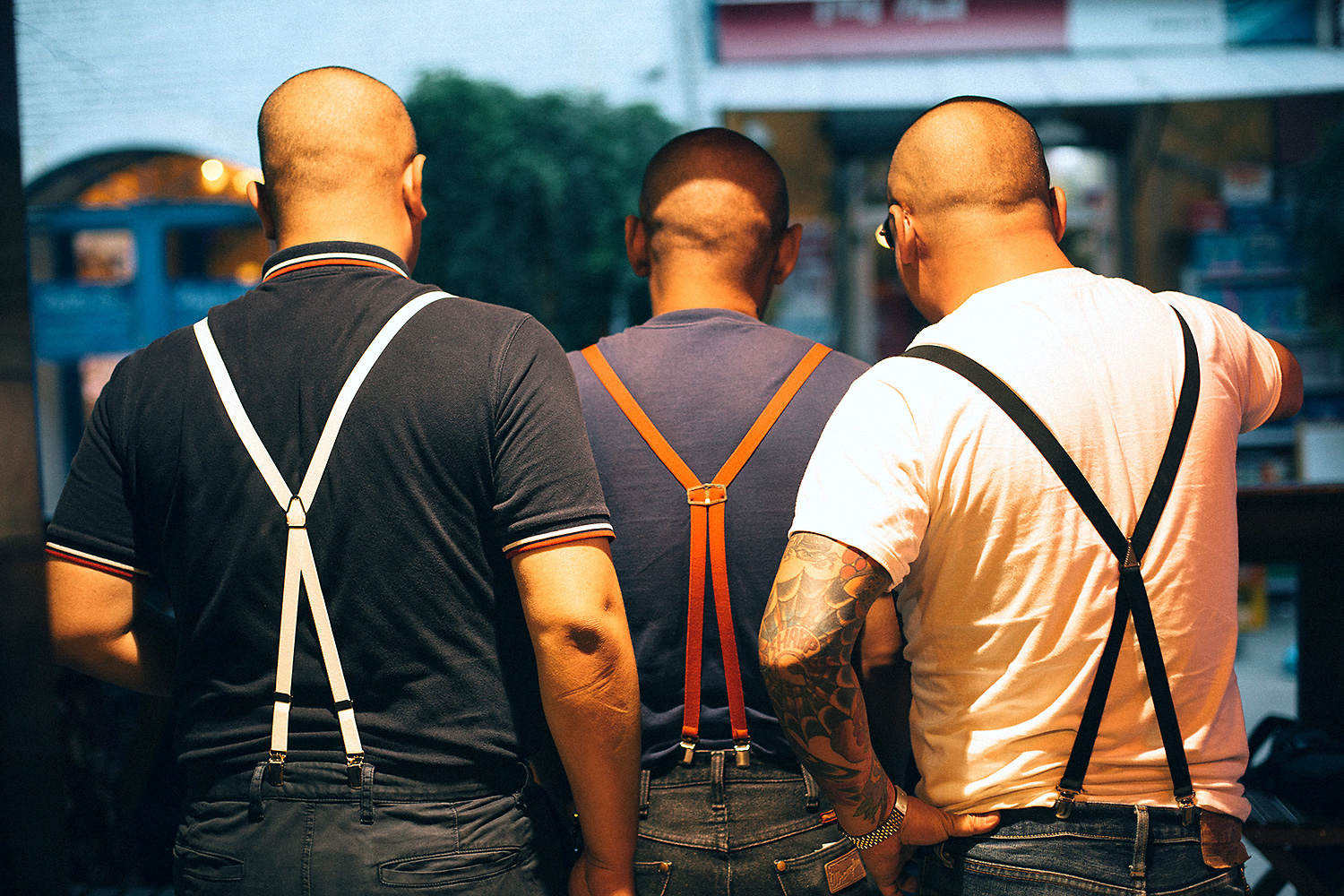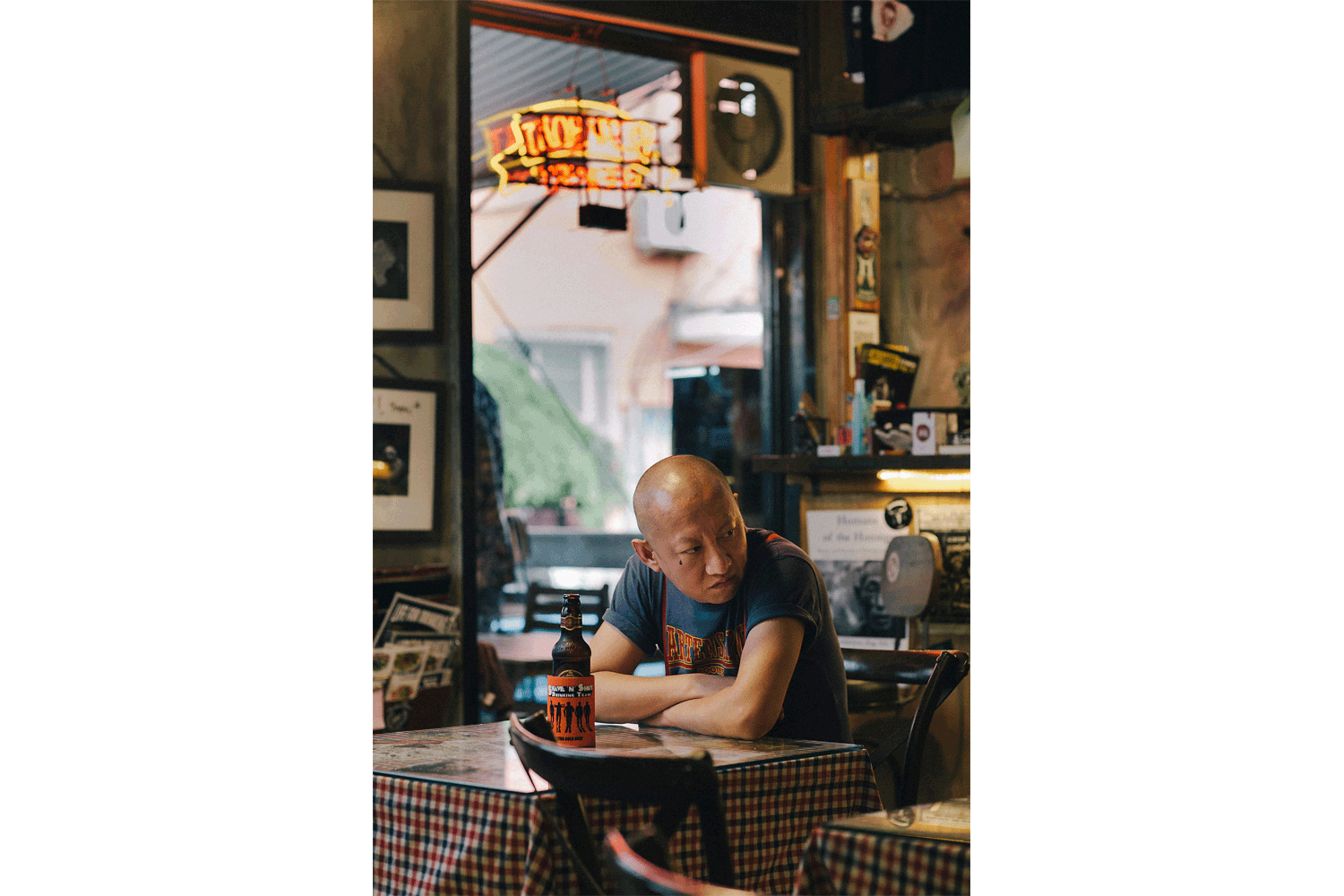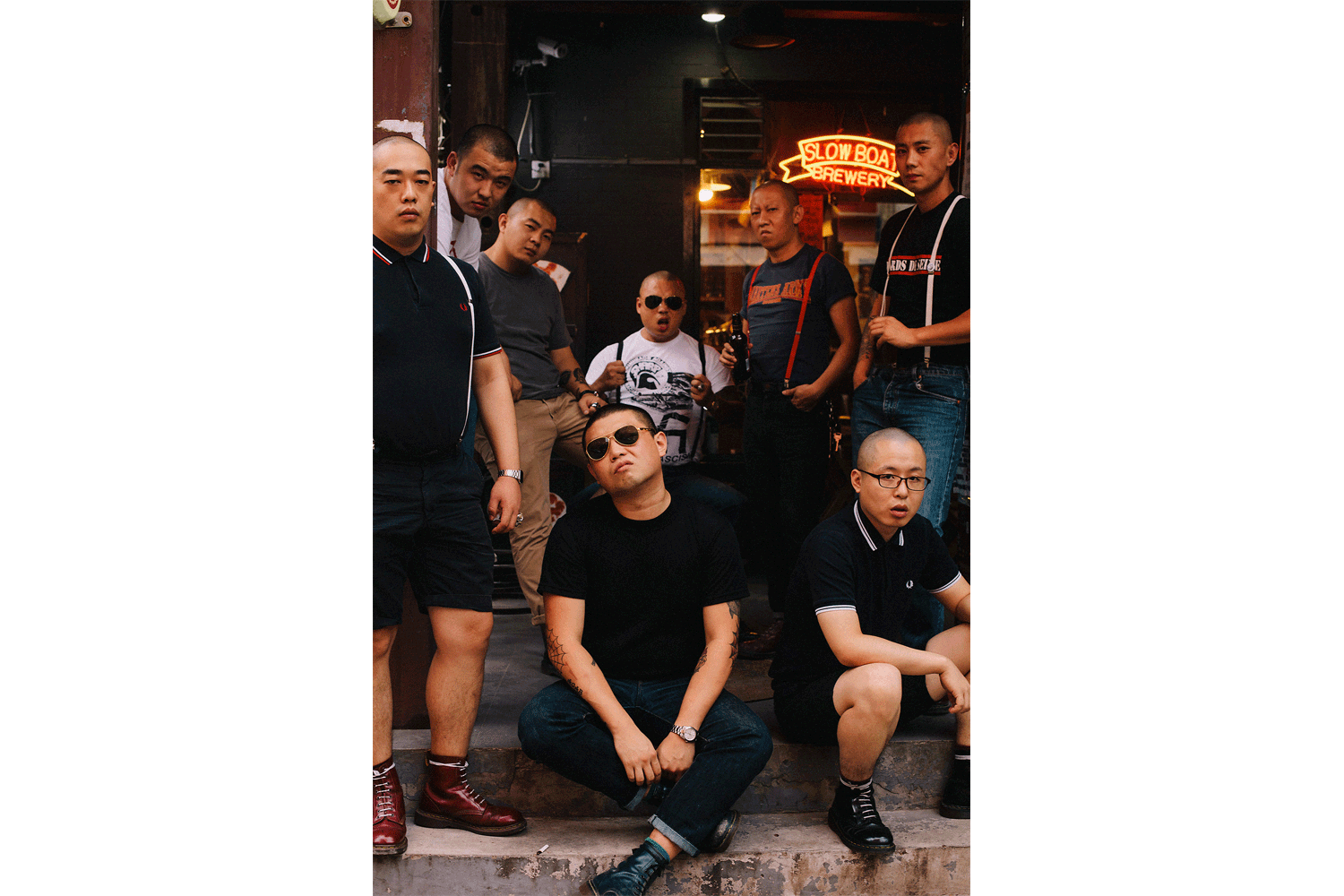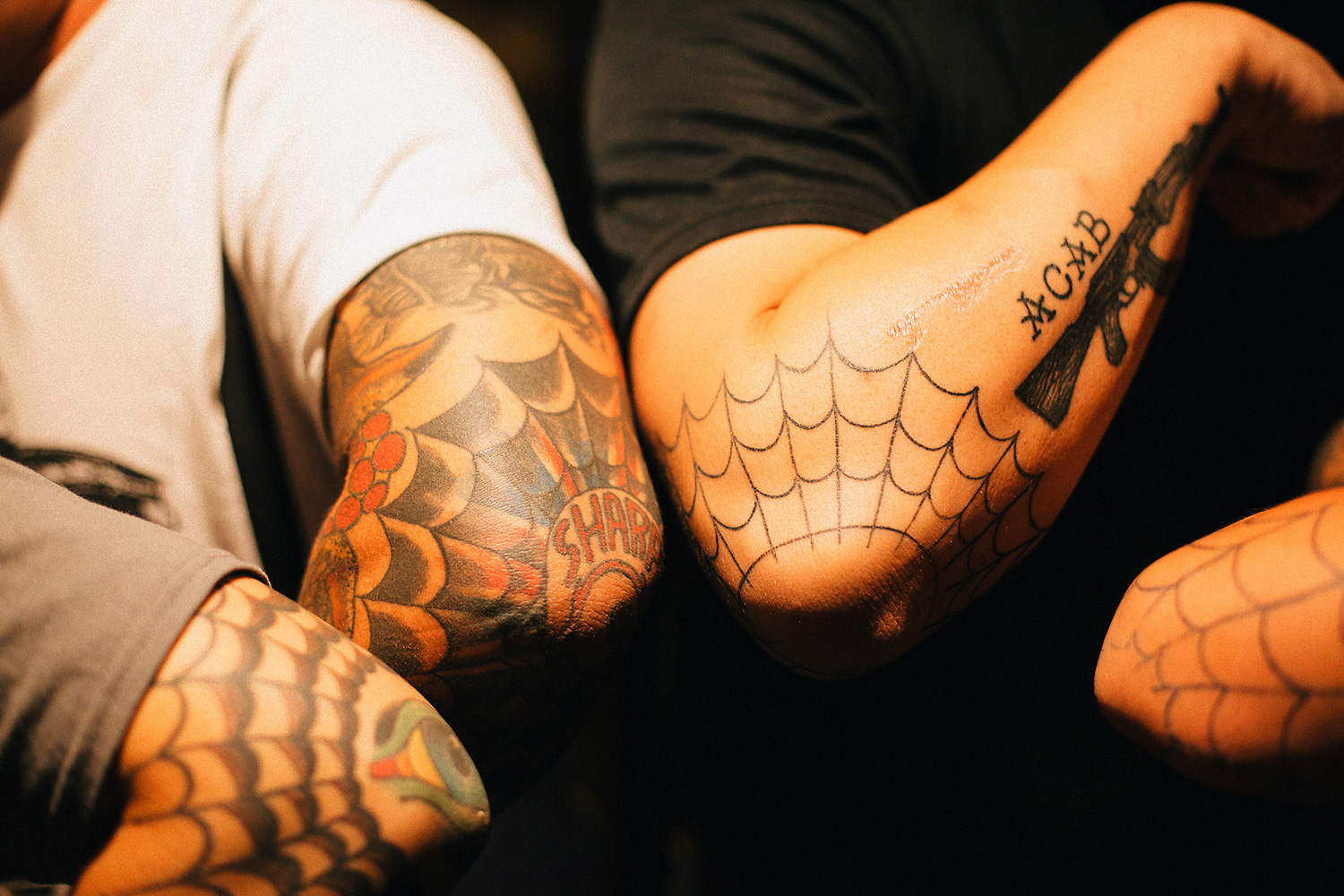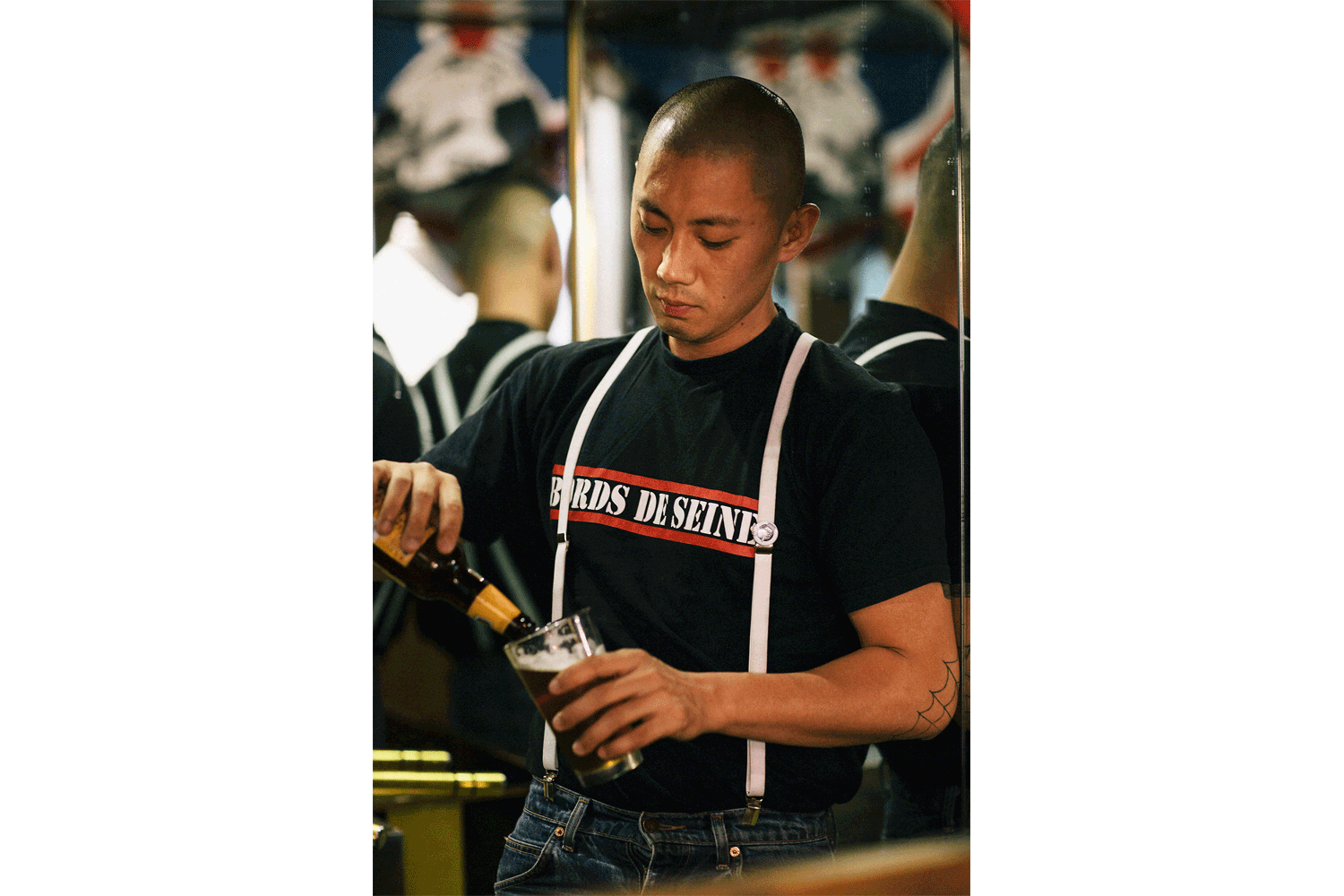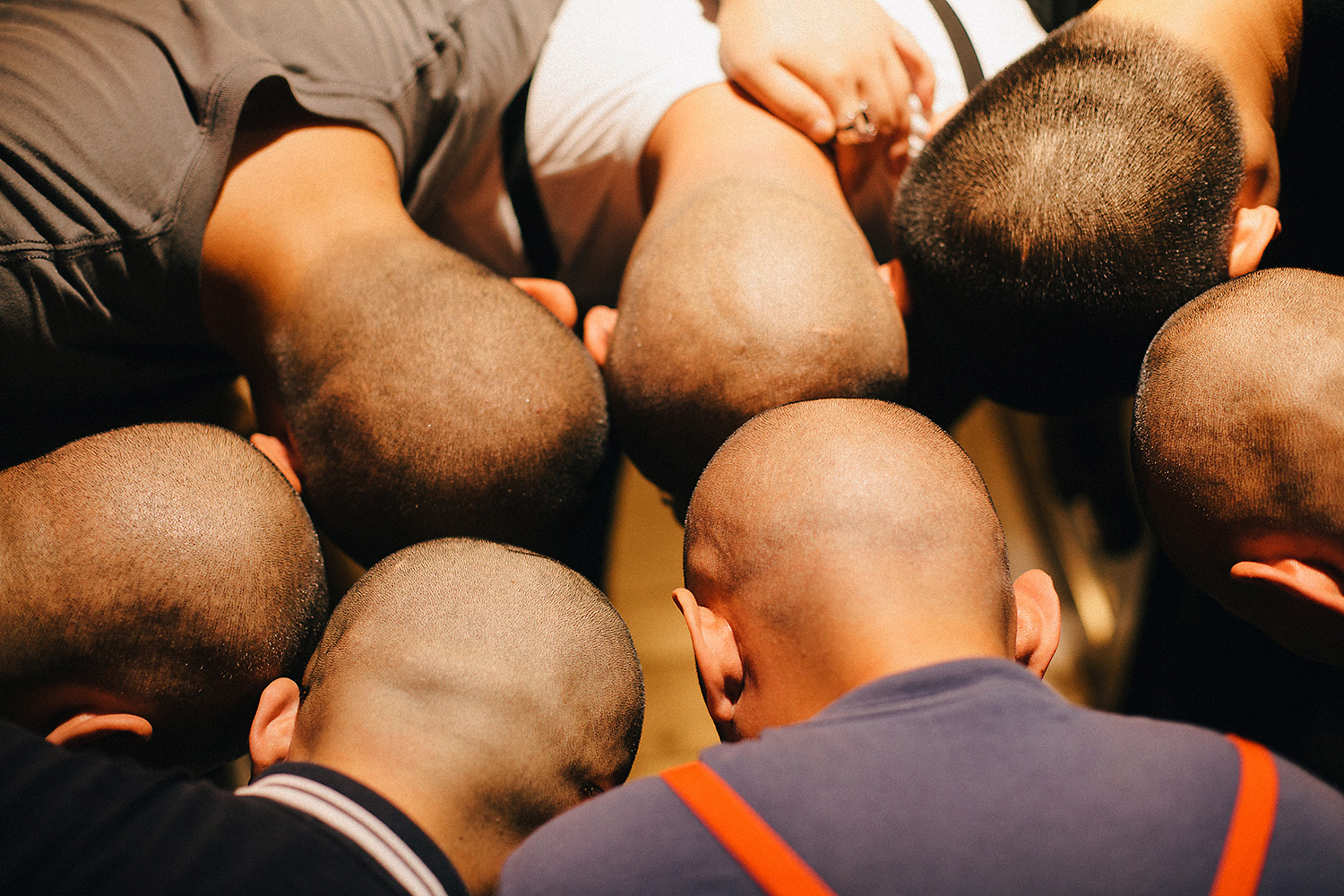Beijing’s Skinheads
A Small Band of Punks Stands Out By Looking Alike
Punk, as with most modern Western rock music, took root in China abruptly and unevenly starting in the early 1990s. Beijing skinhead Ma Ke—pictured here with a teardrop temporary tattoo—was born in 1976, around the same time as punk itself. One of his first encounters with this anti-establishment subculture, which first arose in the United Kingdom, the United States, and Australia, was in the mid-90s at the long-defunct Beijing live music venue Busy Bee (Mang Feng). Ma was intrigued by the spiked hair and dress style of early apostles of the scene, members of bands like Brain Failure and Anarchy Boys.
Ma and his childhood friend Lei Jun became regulars at Scream, a punk club that closed in the early 2000s. In 1999, the two formed the band Misandao (roughly “Three Sweet Cuts”). Named after a bite-sized honey cake popular in Beijing, the band was the first to identify with the skinhead movement in punk, whose members shave their heads and wear boots and suspenders to signal their loyalty to the working class and its values.
Ma’s crew consumed punk culture however they could at the time—from the few friends in their circle with an Internet connection, from black market CDs and cassettes, and from bootleg movies on VCD—and eventually settled on the 1992 film Romper Stomper, about neo-Nazis in suburban Melbourne, as their style guide. “In those days, it was hard to dress like a punk. We couldn’t easily get spiked leather jackets, studded belts, boots. But it was easy to shave our heads and wear suspenders,” said Ma, who has kept his head clean-shaven for over 20 years. Ma pored over the history of skinhead culture and the Oi! punk sub-genre that emerged in late 1970s working class Britain as a reaction against the voguish pretensions of early standard-bearers such as the Sex Pistols.
Well aware of the overlap between skinhead punk and neo-Nazi movements, Ma pointedly identifies himself and his friends as anti-fascist skinheads, akin to the Skinheads Against Racial Prejudice (SHARP) movement started in New York City in the late 1980s. “Even though China is viewed as fascist by the outside world,” Ma said, “there’s no room for fascism here.”
Misandao, and especially the lead vocalist Lei, were instrumental in defining punk culture in China, especially through the Beijing Punk Festival that Lei founded in 2003. Lei died of a heart attack in May 2015, months before he had been planning to open a noodle shop in the city’s central Gulou neighborhood. The restaurant is now run by Lei’s widow—with daily help from Ma, who also works as a freelance photographer of Chinese street culture. Punk Rock Noodle, as the shop is known in English, is a main hangout for Beijing punks and skinheads today. Most of these photos were taken there.
Skinheads are a rare breed in China. Ma estimates there are only between 10 and 20 of them, mostly in Beijing, with a handful scattered in cities such as Chongqing and Shanghai. “It’s hard to keep statistics, since some people who say they’re skinheads this year won’t be next year.” Ma said that for him, skinhead culture in Beijing is an indistinguishable mix of musical preference, dress code, and specific history—a committed lifestyle choice for him and his friends.
Captions from Jiemian translated by Eleanor Goodman. Aditional translation assistance by Emma Sun.




